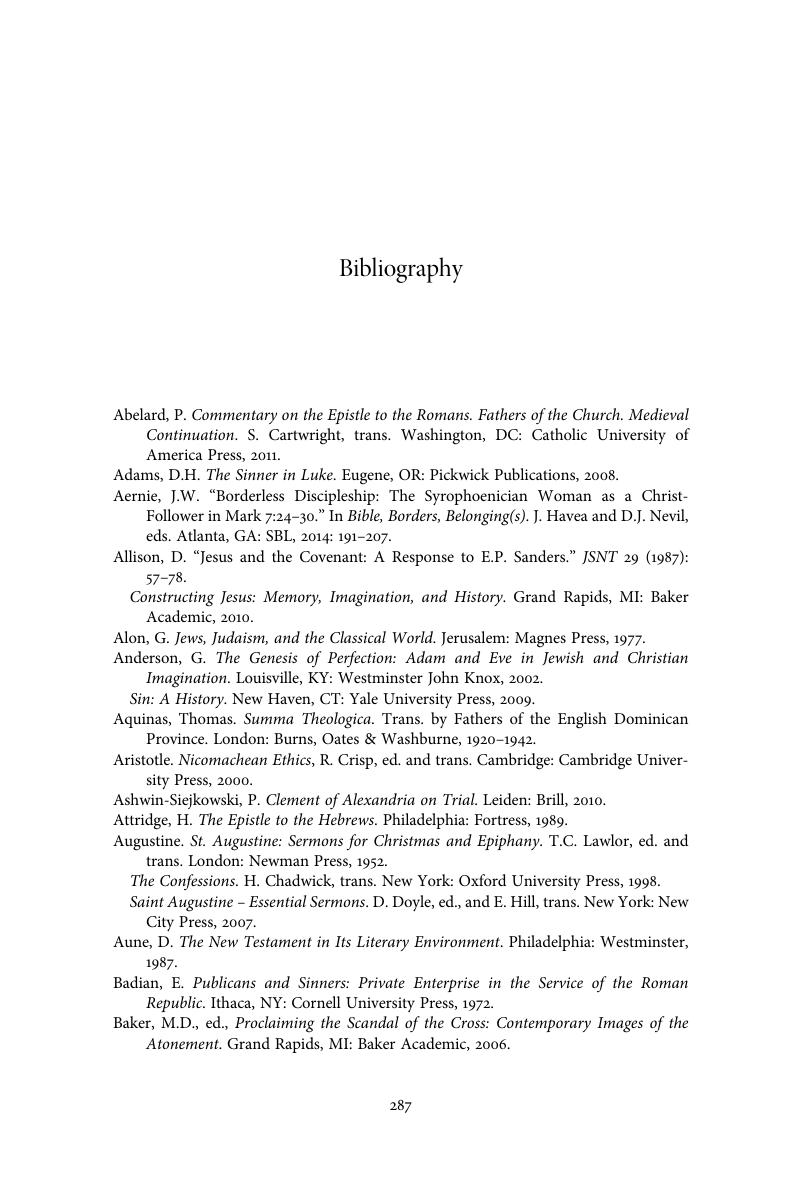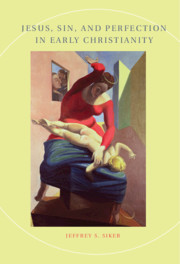Book contents
- Jesus, Sin, and Perfection in Early Christianity
- Jesus, Sin, and Perfection in Early Christianity
- Copyright page
- Dedication
- Contents
- Preface
- Glossary
- 1 Introduction: From Sin to Perfection
- 2 Approaching the Gospels
- 3 A Taxonomy of Sin
- 4 From SinfulBirth to Virgin Birth
- 5 From Repentant to RighteousBaptism
- 6 A Tempting Transition
- 7 The Scandal ofFamily
- 8 The Scandal ofFriends
- 9 The Scandal of Faith
- 10 FromSinful Death to Perfect Death
- 11 From Sin to Perfection
- 12 Saving Jesus from Perfection
- Bibliography
- Scripture and Ancient/Medieval Sources Index
- Name Index
- Subject Index
- References
Bibliography
Published online by Cambridge University Press: 05 September 2015
- Jesus, Sin, and Perfection in Early Christianity
- Jesus, Sin, and Perfection in Early Christianity
- Copyright page
- Dedication
- Contents
- Preface
- Glossary
- 1 Introduction: From Sin to Perfection
- 2 Approaching the Gospels
- 3 A Taxonomy of Sin
- 4 From SinfulBirth to Virgin Birth
- 5 From Repentant to RighteousBaptism
- 6 A Tempting Transition
- 7 The Scandal ofFamily
- 8 The Scandal ofFriends
- 9 The Scandal of Faith
- 10 FromSinful Death to Perfect Death
- 11 From Sin to Perfection
- 12 Saving Jesus from Perfection
- Bibliography
- Scripture and Ancient/Medieval Sources Index
- Name Index
- Subject Index
- References
Summary

- Type
- Chapter
- Information
- Jesus, Sin, and Perfection in Early Christianity , pp. 287 - 304Publisher: Cambridge University PressPrint publication year: 2015



